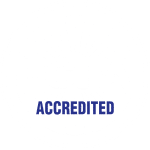On Tuesday, October 26, the Substance Abuse and Mental Health Services Administration (SAMHSA) published its annual National Survey on Drug Use and Health for 2020, and the results are sobering. In 2019, over 20 million people in the United States were diagnosed with substance use disorder (SUD). In 2020, 41.1 million U.S. citizens reported SUD diagnoses 2020, over doubling the previous year’s count.
“SUD” is the diagnostic term for what the general public and the recovery community often call “addiction.” In the survey, SUD encapsulates three subsets: alcohol use disorder (AUD, or alcoholism), illicit drug use disorder (IDUD, or drug addiction), and a combination of both AUD and IDUD. Illicit drugs categorized under IDUD include marijuana; prescription pain relievers, stimulants, tranquilizers, and sedatives; hallucinogens; cocaine; methamphetamine; inhalants; and heroin.
These subsets also show a massive increase. 28.3 million people suffer from alcoholism (up from 14.5 million in 2019), 18.4 million people suffer from drug addiction (up from 8.3 million in 2019), and 6.5 million people struggle with both alcohol and drug addiction (up from 2.4 million in 2019). Additionally, a related study from the Centers for Disease Control and Prevention (CDC) found that e-cigarette use, namely nicotine vaping, recently reached epidemic proportions.
Perhaps the survey’s most alarming revelation concerned treatment statistics. Of the 41.1 million people needing treatment for addictions, only 4 million received any treatment whatsoever. Further, only 2.7 million people with addictions received treatment at a specialty facility (Adult & Teen Challenge falls under this category). The survey reported that the remaining 37.5 million, 97.5 percent of those with addictions, did not receive treatment because they did not feel it was necessary despite medical diagnoses.
According to SAMHSA, the drastic inflation in the results is due to the organization’s adoption of the DSM-5 as the SUD diagnostic tool. Previously, a person was diagnosed with SUD if they met certain criteria for either substance dependence or abuse. Now, the person must only meet two of eleven enumerated indicators over a 12-month span. The indicators are listed below.
- Taking the substance in larger amounts or for longer than intended.
- Persistent desire or unsuccessful efforts to cut down or stop using the substance.
- Spending a lot of time getting, using, or recovering from use of the substance.
- Cravings and urges to use the substance.
- Failure to manage work, home, or school responsibilities because of substance use.
- Continuing to use, even when it causes problems in relationships.
- Giving up important social, occupational, or recreational activities because of substance use.
- Repeatedly using substances even in hazardous situations.
- Continued use despite a physical or psychological problem caused or made worse by the substance.
- Needing more of the substance to get the desired effect (increased tolerance).
- Development of withdrawal symptoms, which can be relieved by taking more of the substance.
The increase is also attributed to the effects of the COVID-19 pandemic. According to a SAMHSA press release, an estimated 25.9 million past-year alcohol users and 10.9 million past-year illicit drug users stated that they were using the substances “a little more or much more” than they were prior to the pandemic. Still, SAMHSA urges caution when trying to pinpoint exact causes, as data collection methods and results were vastly affected from April to September 2020.
Whether caused by the pandemic, the new testing standards, or a combination of the two, the twofold increase in diagnosed cases of addiction points to the necessity of Adult & Teen Challenge programs. The ATC National Office is working hard to empower, educate, and equip centers to push back against this onslaught of addiction.
Through Project Reach, ATC will bring the power of the gospel message to cities across North America. Ready Now Recovery, ATC’s small group ministry, is poised to come alongside local centers, providing safe environments in which church and community members can work together to defeat their life-controlling issues. The FORGE Leadership Development Strategy is training the next generation of ATC leaders to guide the ministry into the next generation. The National Office is also partnering with corporations to establish military specialization programs, tailored to meet the unique needs of men and women in uniform, and dedicated restoration centers to help those in need of further care after relapse or other challenges.
The world is hurting, broken, and struggling in the wake of the pandemic. Many are looking for answers but settling for temporary solutions in bottles, needles, pills, technology, and unhealthy relationships. Adult & Teen Challenge understands that the only solution to the problem of addiction and other life-controlling issues is a relationship with Jesus Christ. By the grace of God, ATC will continue to be an outstretched hand to those desperately in need of salvation, and until all people are freed from addiction, the ministry will continue developing new techniques, programs, and strategies to advance the gospel in the United States, North America, and the world.



